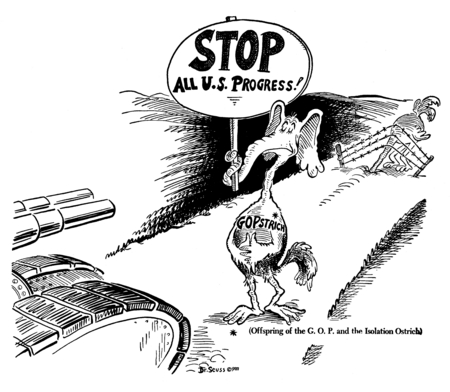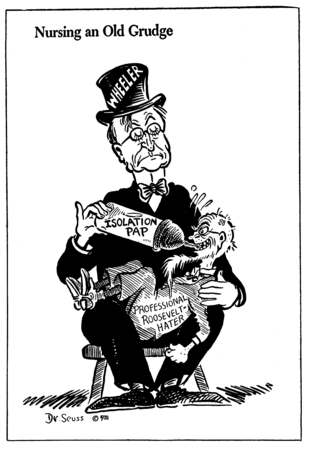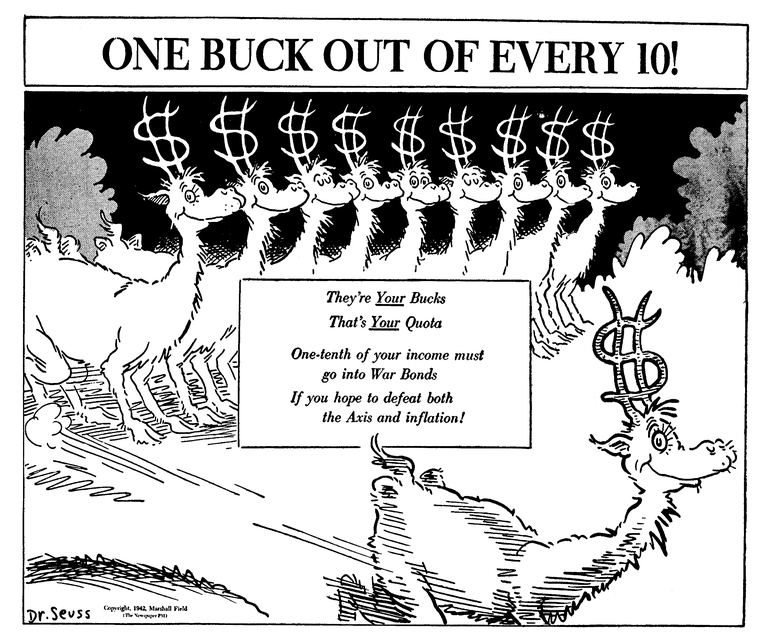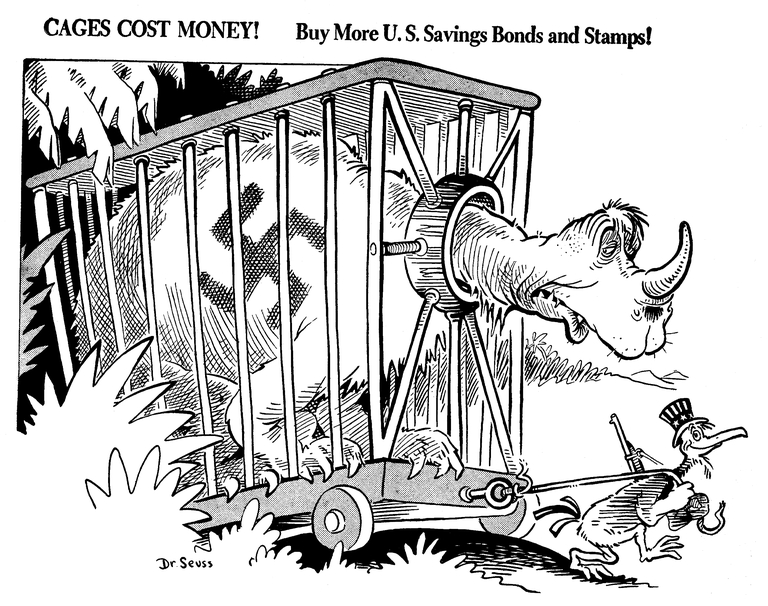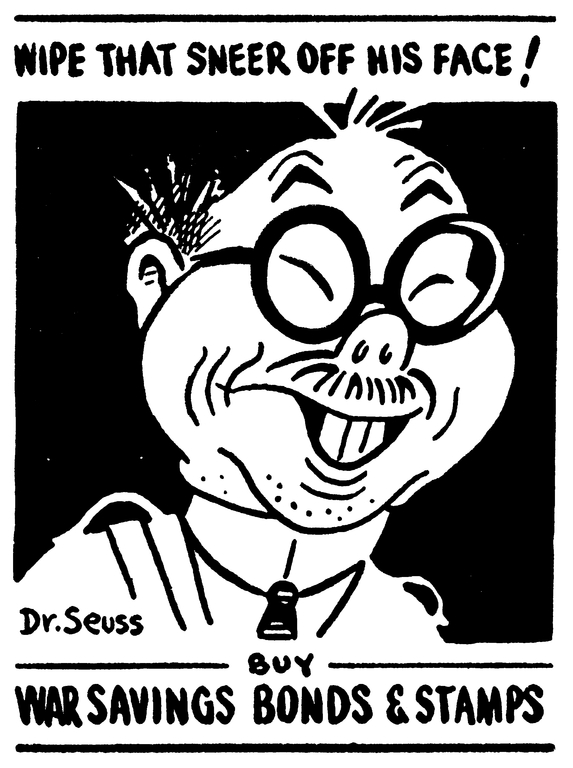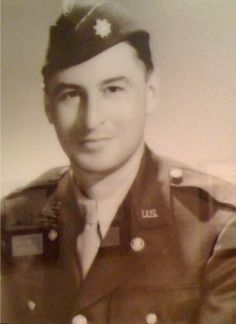"Ted was haunted by the war in Europe, and one evening in Manhattan he showed an editorial cartoon he had drawn to his friend Zinny Vanderlip Schoales, the brilliant, hard-drinking intellectual…. She had joined the patrician liberal Ralph Ingersoll when he launched the tabloid newspaper PM in New York with the backing of Marshall Field III. Zinny took Ted’s cartoon to Ingersoll and PM published it on January 30, 1941…"
~ Judith and Neil Morgan, Dr. Seuss and Mr. Geisel: A Biography
